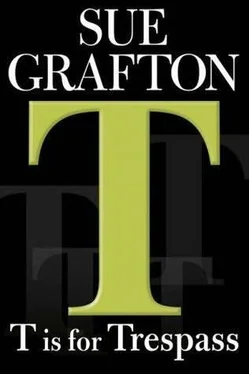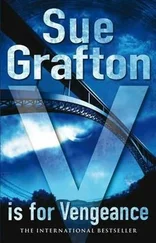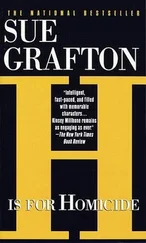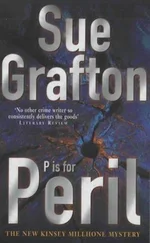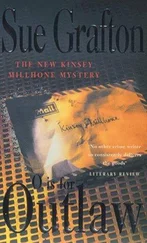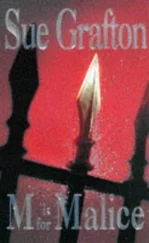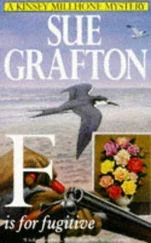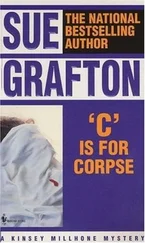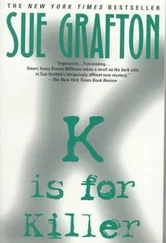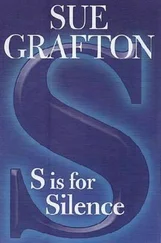“It’s fine. I’ll attach an itemized account when I send you my report,” I said. “Does she know about this?”
“No, and let’s keep it between the two of us. I don’t want her to think I don’t trust her, especially after I made such a point of hiring her on the spot. It’s fine if you want to tell Henry.”
“I’ll be ever so discreet.”
I’d mapped out a visit to the City College campus where Lisa Ray’s accident had occurred. Time to scout the area and see if I could run the missing witness to ground. It was close to 3:15 by the time I reached the Castle off-ramp and turned right onto Palisade Drive, which angled up the hill. The day was gloomy, the sky overcast in a way that made me think of rain, but California weather can be deceptive. In the East, dense gray clouds would signal precipitation, but here we’re subject to a marine layer that doesn’t mean much of anything.
Santa Teresa City College sits on a bluff overlooking the Pacific Ocean, one of 107 colleges in the California system of community colleges. The grounds are spread out over considerable acreage, east campus and west campus divided by a street called High Ridge Road, which forms a gentle downhill run to Cabana Boulevard and the beach. Driving by, I could see parking lots and various campus buildings.
There weren’t any retail establishments in the immediate vicinity, but a mile to the west, at the intersection of Palisade and Capillo, there was a string of storefront businesses: a café, a shoe-repair shop, a market, a card shop, and a drugstore that serviced the neighborhood. Closer to campus there was a gas station and a large chain supermarket that shared a parking lot with two fast-food restaurants. The old guy might live near the college or he might have had business in the area. From Lisa’s account, it wasn’t clear whether he was on foot or on his way to or from his car. There was also a possibility he was on the faculty or staff of the college itself. At some point, I’d have to start knocking on doors, fanning out from the site of the accident.
I passed the campus, circled back, and finally pulled in at the curb across from the entrance where Lisa Ray’s car had been stopped in preparation for her left-hand turn. There was a time when a private investigator might have done much of the digging in a lawsuit of this type. I’d once known a gumshoe whose specialty was making scale diagrams of accidents, taking measurements of street widths and reference points relevant to a collision. He’d also take photographs of tire tracks, angles of visibility, skid marks, and any other physical evidence left at the scene. Now this data is assembled by the accident-reconstruction experts, whose calculations, formulas, and computer models eliminate most of the speculation. If the lawsuit reached court, the expert’s testimony could make or break the case.
I sat in my car and reread the file, starting with the police report. The police officer, Steve Sorensen, was not one I knew. In the various categories that denoted conditions, he’d checked clear weather, midday, dry roadway surface, and no unusual conditions. Under “movement preceding collision,” he indicated that the Fredricksons’ Ford van (Vehicle 1) was proceeding straight, while Lisa’s 1973 Dodge Dart (Vehicle 2) was making a left-hand turn. He’d included a rough sketch with the proviso that it was “not to scale.” In his opinion, Vehicle 2 had been at fault, and Lisa had been cited for I 21804, public or private property, yield to approaching vehicles, and 22107, unsafe turn, and/or without signaling. Lowell Effinger had already hired a Valencia accident-reconstruction specialist, who’d assembled the data and was now in the process of preparing his report. He was also doubling as a biomechanical expert and would use the information to determine if Gladys’s injuries were consistent with the dynamics of the collision. With regard to the missing witness, old-fashioned legwork seemed to be my best bet, especially since I couldn’t come up with any other plan.
The few black-and-white views the traffic officer had shot at the time didn’t seem that helpful. Instead, I’d turned to the assortment of photos, both color and black-and-white, that Mary Bellflower had taken of the scene and the two vehicles. She’d arrived within a day of the collision, and her pictures showed fragments of glass and metal visible in the road. I scanned the street in both directions, wondering who the witness was and how I was going to find him.
I went back to the office, checked the file again, and found the number listed for Millard Fredrickson.
His wife, Gladys, answered on the third ring. “What is it?”
In the background, a dog barked incessantly in a range that conjured up images of a small, trembling breed.
“Hi, Mrs. Fredrickson. My name is…”
“Just a minute,” she said. She put a palm over the mouthpiece. “Millard, would you shut that dog up? I’m trying to talk on the phone here. I said, SHUT THAT DOG UP!” She removed her palm and returned to the conversation. “Who is this?”
“Mrs. Fredrickson, my name is Kinsey Millhone…”
“Who?”
“I’m an investigator looking into the accident you and your husband had last May. I’m wondering if we might have a chat with the two of you.”
“Is this about the insurance?”
“This is about the lawsuit. I’m interested in taking your statement about what happened, if you’d be so kind.”
“Well, I can’t talk now. I’ve got a bunion on my foot that’s giving me fits and the dog’s gone berserk because my husband went out and bought a bird without so much as a by-your-leave. I told him I don’t intend to clean up after anything lives in a cage and I don’t give a hang if it’s lined with paper or not. Birds are filthy. Full of lice. Everybody knows that.”
“Absolutely. I can see your point,” I said. “I was hoping I might stop by in the morning, say at nine o’clock?”
“What’s tomorrow, Tuesday? Let me check my calendar. I might be scheduled to see the chiropractor for an adjustment. You know I’ve been going in twice a week, for all the good it’s done. With all the pills and folderol, you’d think I’d be fine. Hold on.” I could hear her flipping pages back and forth. “I’m busy at nine. It looks like I’ll be here at two, but not much after that. I have a physical therapy appointment and I can’t afford to be late. They’re doing another ultrasound treatment, hoping to give me some relief from all the lower-back pain I got.”
“What about your husband? I’ll want to talk to him as well.”
“I can’t answer for him. You’ll have to ask him yourself when you get here.”
“Fine. I’ll be in and out of there as quickly as possible.”
“You like birds?”
“Not that much.”
“Well, all right then.”
I heard a high-pitched, astonished yelp, and Gladys slammed the phone down abruptly, possibly in order to save the dog’s life.
In the office Tuesday morning, I made a copy of Solana Rojas’s application and tucked the original in an envelope I addressed to Melanie. The five-hundred-dollar advance was my usual charge for one day’s work, so I thought I’d jump into it and make it worthwhile for both of us.
I sat at my desk and studied the application, which included Solana’s Social Security number, her driver’s license number, her date and place of birth, and her LVN certification number. Her home address in Colgate showed an apartment number, but the street itself wasn’t one I knew. She was sixty-four years old and in good health. Divorced, with no minor children living at home. She’d earned an AA degree from Santa Teresa City College in 1970, which meant she’d gone back for her degree when she was in her midforties. She’d applied for nursing school, but the waiting list was such that it took another two years before she was accepted. Eighteen months later, having completed the requisite three semesters in the nursing program, she had her certification as an LVN.
Читать дальше
